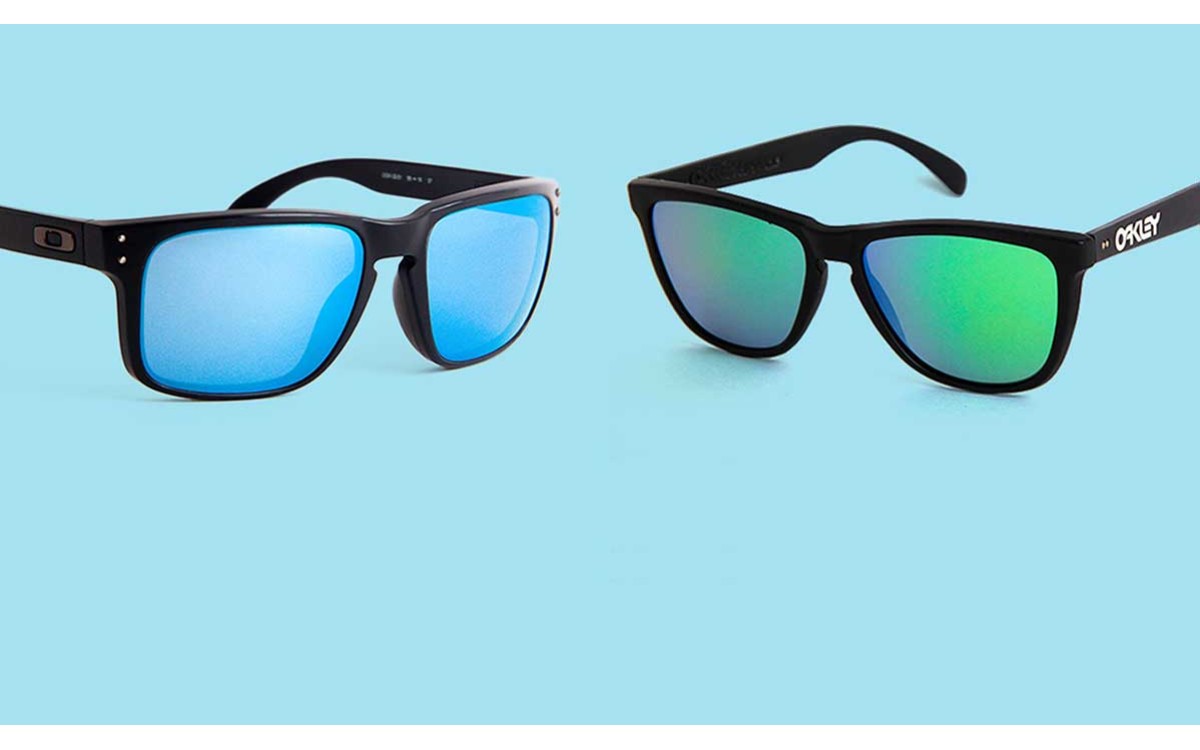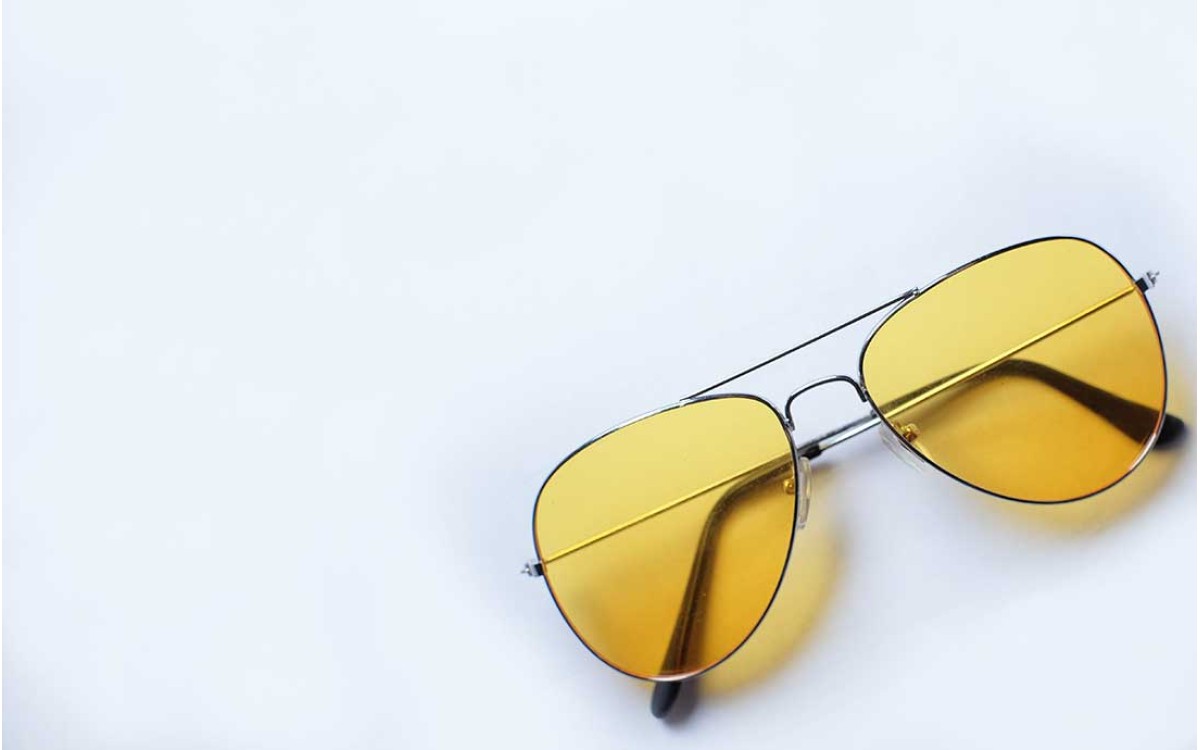Before we examine the more technical elements of the G15 lens, with a look at the hows and whys behind them – as well as exploring just how these lenses can be of benefit to you – it’s easiest to define G15 glass lenses by their most obvious attribute – their color.
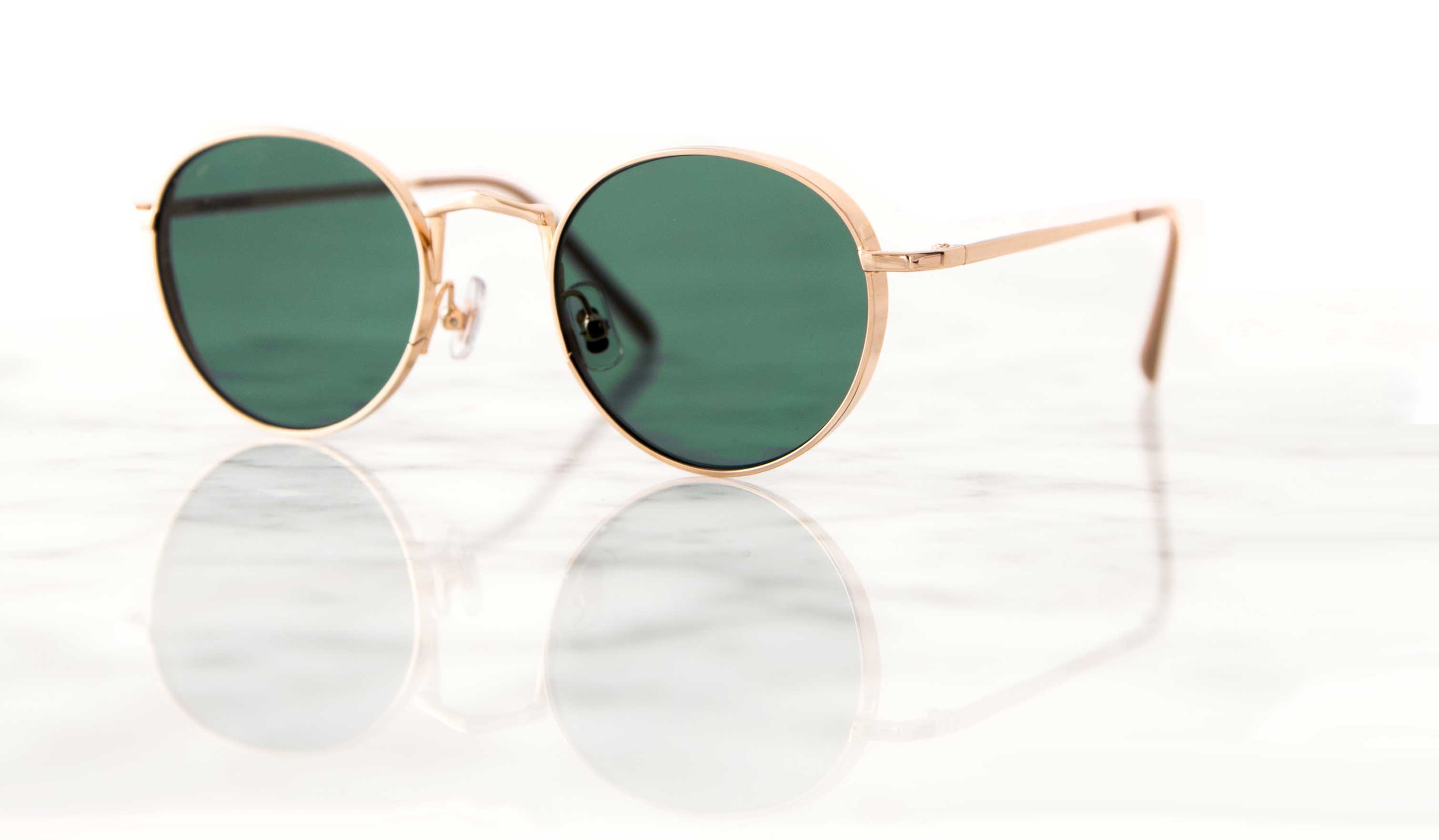
These lenses are most obviously identified by the striking green color of their lenses. This color – traditionally known as ‘aviator green’ – is in fact a mix of black, green, and brown undertones. Also known to those in the industry as ‘crystal green’ or ‘green lenses’, they’re exceptionally striking and effortlessly recognisable. For some designers, producing sunglasses with lenses in this color is common. The name ‘aviator green’ is, in fact, due to their first appearance in Ray-Ban Aviator sunglass lenses.
The reasons behind the green are multiple, and we’ll take a look at them in this article, answering all your questions, including the benefits, uses, and practicalities that make them an ideal choice for some very common, and other much more specific, situations.
What are G15 Lenses and how did they evolve?
Essentially, these lenses were developed for pilots, and they assist with retaining crystal clarity of vision against a blue backdrop.
Visually, you will note that these green glasses are usually ‘aviator’ in design, with the lenses sitting within ‘pilot’ style frames i.e. shaped to hold lenses that resemble teardrops. The large size of the lenses would traditionally have been useful to a pilot who’d have been required to utilize an increased range of vision, looking out of their cockpit, around in the sky’s blue expanse, and also down at their instrument panel, whilst the convex tailoring of the lenses offered maximum eye coverage.
The g15 green lenses were particularly important in addition, because the color allowed the pilot to see elements more clearly against a blue (i.e. sky) background. The high contrast image they deliver was, and is, superb, meaning that Aviators, and G15 lenses, were standard Air Force issue in the 1930s and 40s.

Common G15 Lens Questions
Are G15 lenses polarized?
G15 stands for Green number 15 and one of many shades of green used in the industry. It’s a color and has nothing to do with polarization. The G15 color can be either made on a polarized lenses or on a non polarized lens and will cosmetically look identifcal. As a technology, polarized lenses were invented around about the same time as G15 lenses, but the two work very differently. Let’s take a quick look at their history and uses in order to compare them:
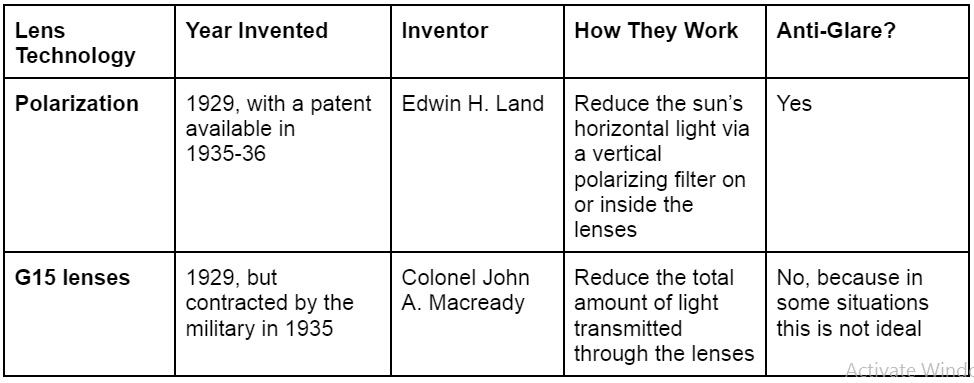
How much light do G15 lenses block out?
The key is in the name – the ‘15’ in ‘G15’ refers to the amount of light that’s allowed through by G15 glasses. Essentially speaking, they admit 15% of light through them, whilst 85% of light is blocked out. What’s important to note here is that by ‘light’ we don’t mean harmful UV (ultraviolet) rays, as these lenses still perform their primary act of protecting the eyes from the sun, and do block out all harmful UV rays. What we’re referring to here is the problematic light known as ‘glare’, which can affect pilots as well as people in other domestic and non-domestic situations, as we will go on to examine.
When should I wear G15 sunglasses?
Sunglasses are mainly worn to protect your eyes from the sun’s rays and, potentially, the elements themselves e.g. strong wind. However, whether you reach for your G15 sunglasses or your polarized shades will depend on (a) the level of light, and (b) what kind of activity you’ll be engaging in.
Light levels: G15 lenses are optimum in lower light conditions, whereas polarized lenses are proven better in high light situations and circumstances.
Activity type: G15 lenses are the best choice when you want to retain a more natural vision. In lower light, this could mean driving, for example, as you’ll want to be able to spot light from other vehicles as well as signals. In bright conditions, polarized lenses make an ideal choice, because they stop glare occurring when light hits your windshield. Polarized lenses can also reduce surface glare on a body of water, making them a good choice for water sports such as fishing and skiing – but remember, again, that this depends on the general light levels of that day. G15 lenses are better on less bright days; they were invented primarily for pilots to retain crystal clarity of vision in the sky – so, a blue expanse of water is a perfect circumstance in which these lenses can really deliver, offering unparalleled vision performance by providing high image contrast.
Always take care to consider that there may always be circumstances in which you would not want to reduce glare, but just reduce light, as on cloudy days. And, remember that G15 lenses provide a more realistic vision than polarized lenses, which might be paramount in some situations, particularly where safety is concerned.
Can I wear G15 Lenses for driving?
Driving is, as already mentioned, one situation in which lens type is important. We recommend a G15 lens for driving specifically when or where there are cloudy, overcast, rainy, foggy, or other sub-optimum light conditions. These lenses mean ‘important’ light / glare from signals and other cars isn’t filtered out at these times, when it’s really vital that you pay attention to them. Wearing polarized lenses whilst driving could, on a more dimly lit day, prove disastrous.
Are G15 Lenses good for sports?
They are a great lens type for golf enthusiasts. The reason for this is that they don’t interfere with true colors. As any keen golfer will know, you need to be able to spot holes and flags, as well as the ball itself, during this long-range game. These lenses allow the user to retain true-to-life color tones, whilst offering protection from UV and the elements. Green G15 lenses effectively ‘absorb’ blue light and will enable you to read greens better. Their wide range of vision, coming from the classic aviator ‘teardrop’ shape, also holds obvious benefits here.
G15 Lenses for sensitive eyes
These lenses are considered ‘extra dark’ and so are of benefit to anyone suffering from light sensitivity. This applies out of doors, but also indoors, as they effectively block out blue light coming from devices. If you experience eye strain or migraines because of blue light or light in general, reaching for your G15s, or wearing them in situations you know could be over stimulating, can help.
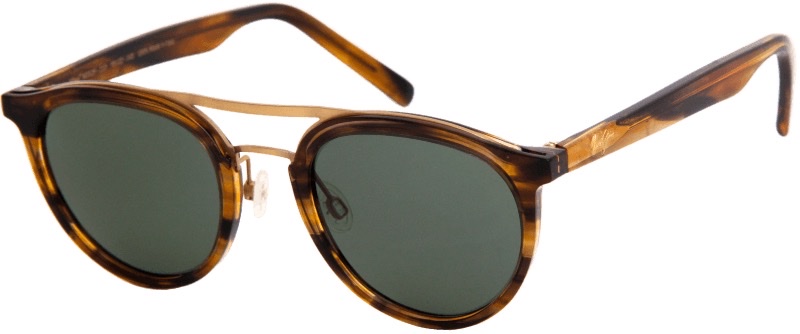
Conclusion: G15 Lens Benefits
We hope this article has demonstrated that these lenses offer plenty of benefits and numerous reasons to choose sunglasses sporting this lens type.
Sunglass Fix Lens Colors of course include this vital green lens. Not every day is bright and sunny, even in supposed ‘sunshine states’, and our eyes need to be protected on days of lower light, too. UV is also still an issue, making the ‘ultra dark’ tint of these lenses extremely beneficial.
And, as we’ve seen, our vision can also be optimized by G15s when engaging in activities that require good hand-eye coordination, whether our hand is on the driving wheel, the golf club or, indeed, the pilot’s control stick. Can you think of any other situations in which protecting your eyes, increasing clarity of vision, and retaining natural colors, might be beneficial? We’re sure there are plenty more situations in which these lenses might come into their own, so make sure you’ve got a pair to hand. And be assured that, if you require replacement lenses, we’ll have these ‘crystal greens’ ready there for you.







